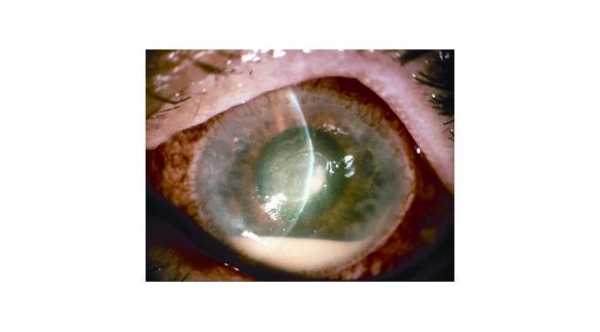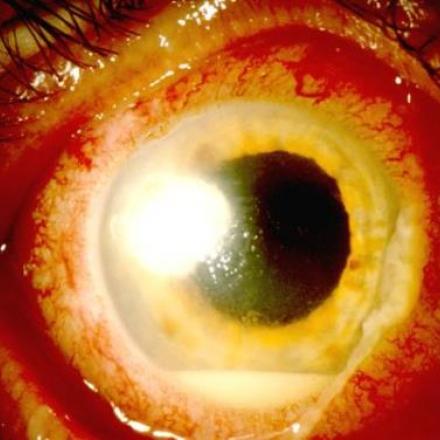
Eye Infection from Contact Lens
Soft contact lenses, first introduced in the early 1970’s, have been improved and refined so that they can correct most vision problems, which mean problems in the eye that glasses or lenses can correct. They are extremely comfortable, and can easily be worn all day. Some are approved for 24 hour-a-day use.
Contact lenses can be fitted and prescribed by eye care professionals such as optometrists and ophthalmologists. When they fit the lenses, they also tell you how to take care of them and sterilize them. If you buy lenses over the internet, you have no idea if they will be sterile and safe for you to wear.
The lenses sit on top of the cornea, the clear part of the front of the eye. The cornea is made up of many clear layers. They protect the eye while allowing light in. The cornea is extremely sensitive. If something gets into your eye and scratches your cornea, you will usually feel it.
Contact lenses are in fact doing that; they are foreign bodies sitting on your cornea. But they are smooth, made up of special kinds of silicone and similar materials along with water, and they do not hurt if they are clean, properly fitted and put in correctly.
However, contact lenses can become contaminated. Bacteria and other infectious agents can grow in contact lens solutions and contact lens containers. When infectious agents get into the contact lenses via solutions or cases, and you put an infected lens in your eye, the infectious agent is in complete contact with your cornea for as long as you wear the lens.
Although there are also always bacteria in and around your eyes, they are protected from infection in many ways, including the natural flow of tears and the act of blinking. Contact lenses can interrupt the normal way your eyes prevent bacteria from causing infection.
Why Contact Lens increases the risk of Corneal Infection?
Contact lenses can cause your cornea to be infected. This is especially true if you wear them all the time and sleep in them, or if you are not following the routine of disinfection given to you by an eye care professional. With infection, pain can become quite severe. You may have redness in the white part of the eye closest to the center. Vision can become blurry.
These are the main mechanisms of eye infection from Contact Lens
1- Corneal Hypoxia
Cornea is provided with oxygen from tear film. Contact lens will prevent the diffusion of oxygen to cornea leading to corneal hypoxia. Contact lens manufactures are competing with each other to provide the best contact lens which provides 100% diffusion of oxygen to the cornea. Corneal hypoxia with cause death to epithelial cells which provide the first layer against the penetration of micro-organisms. Most of the micro-organisms can’t penetrate a healthy cornea.
2- Debris binds to Contact Lens
With poor hygiene, Debris and proteins can bind to contact lens which with time can make the inner surface of lens irregular, causing microscopic corneal abrasions. These small defects can increase in size causing corneal ulcer which can increase the risk of eye infection from Contact Lens. Using eye drops while wearing contact lens can increase the chance of bindings of protein and debris on lens surface.
3- Formation of Biofilm
Biofilm is an aggregation of microorganisms. These micro-organisms are adherent to each other and to the surface of the contact lens and they are surrounded by a self-produced matrix of extracellular materials. Biofilm makes the micro-organisms resistance to disinfections.
4- Mechanical damage to the cornea
Poor fitting contact lenses and damaged contact lenses can cause mechanical damages to corneal epithelial cells.
What should you do if you have eye infection from Contact Lens?
If you ever have eye pain or increasing eye irritation, especially if it is accompanied by a decrease in vision, and you wear contact lenses, remove them immediately. You need to see a doctor as soon as possible. You should bring your lenses, your lens case, and any and all solutions you have used including eye drops, to the doctor. These may be used to find out what has caused your infection.
How to Treat Eye Infection from Contact Lens?
Most Eye infection from Contact Lens can be treated. Depending on the severity of the infection, and the type of infection, it is possible to get scars in the cornea as a result. Corneal scars can affect vision. In the worst case scenario, severe scarring could decrease your vision significantly and would mean a corneal transplant would be needed.
There have been cases of unusual infections with certain protozoa that can get into the water supply. Tap water can get into contact lens solutions, for example if someone decides to dilute their solutions so they last longer. The protozoa can then get into the eye and infect the cornea. Example of these protozoa infection is Acanthamoeba keratitis. Contact lens solutions can also become contaminated.
Eye infection from Contact Lens can be treated by So-called “broad spectrum” antibiotics are used, which will kill the bacteria that usually cause these infections. If the bacteria can be cultured so the type is known, a more specific antibiotic can be used.
How to Prevent Eye Infection from Contact Lens?
Rather than risk any of this, it is better to be extremely careful with your contact lenses. Even if you just want to wear lenses to change your eye color, these must be obtained from a licensed eye care professional and not from the internet without a prescription. Instructions on contact lens care should be followed very carefully.
Trying to save money by diluting your contact lens sterilizing solution or buying your lenses without a prescription are not good reasons to risk corneal infection or damage to your vision.




